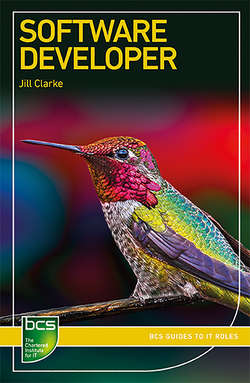Читать книгу Software Developer - Jill Clarke - Страница 12
На сайте Литреса книга снята с продажи.
PREFACE
ОглавлениеWhen I first started writing code we were simply known as programmers. The roles in my first work experience as a programmer were well defined:
1. The analyst analysed the problem.
2. The designer designed the solution.
3. The programmer wrote the code (by hand, on COBOL coding sheets) and then wrote the Job Control Request sheet to define what needed running and how.
4. The punch operator transferred the code onto punched cards.
5. These were passed to the operator who ran the code on the big old mainframe.
6. Some days later, the programmer was given a (memory) core dump with error listing, they worked out what was wrong and wrote out the corrections, which went to the punch card operator etc.
Try transferring that process to modern text messaging:
1. Someone asks what you want to say and who you want to say it to.
2. Someone else works out the right words and emojis.
3. You write that on a piece of squared paper (one character per square).
4. Someone else transfers that to the correct text message request form.
5. Someone else types that into the mobile phone (that is shared by the whole office).
6. You then get a printed reply to your text.
It doesn’t even bear thinking about nowadays, thank goodness for progress.
Today even the job title is different. Modern terminology tends to use the term ‘developer’ as opposed to ‘programmer’, although the terms are used interchangeably too. The modern role of software developer is very different from that first work experience, and thankfully much broader, more interesting and dynamic too. This book explores this modern role which now has as many dimensions as names within the modern workplace.
No previous knowledge is assumed so the book will be suitable for anyone who is either looking to find out more about the role, just starting out in their career in the IT industry, or looking to further develop self-taught programming skills.
This book will cover what the role is and the types of skills and tools commonly needed to do the role; it will also look at the different relevant applications, environments and industry sectors, giving examples of popular programming languages or associated techniques along the way.
SYMBOLS USED IN THE BOOK
Side track
Thinking moment
